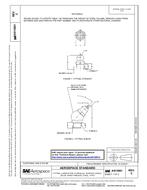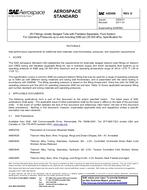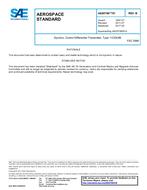Click here to purchase
This Standard applies to motor driven mobile air conditioning systems consisting of one in-car air coil (evaporator), a compressor, an expansion device, and one under-hood air coil (condenser).This standard can also be used for measuring systems that use electrically driven compressor if measurement of input power to compressor is carefully considered. This standard can also be used for measuring systems that include the entire air handling system if air side pressure drop for the entire vehicle system is carefully considered. This standard can also be used for measuring systems that include the entire front end cooling module if air side pressure drop for the entire vehicle system is carefully considered. This standard can also be used for measuring systems that include a secondary cooling loop if the power to drive the pumps in this system is carefully considered.This Standard specifies procedures, apparatus, and instrumentation that will produce accurate steady state capacity and efficiency data for refrigerant components.This Standard does not: Specify tests for dual evaporator systems; Specify transient test methods; Make recommendations for safety; Specify tests for production, specification compliance, or field testing of mobile air conditioning systems.This Standard provides a method of testing the capacity (performance) and efficiency (COP) of mobile air conditioning refrigerant systems under steady state conditions.The procedure proposed is designed to give maximum repeatability and minimum error in determining cooling capacity (Q) and efficiency (COP – Coefficient of Performance) of the refrigeration system of the mobile air conditioner. For that reason a “breadboard” type facility is proposed in which components are assembled into a system and exposed to operating conditions in individual, separately controlled chambers. The facility should allow for three methods to determine system performance: refrigerant side, airside, and calorimetric chambers. Each side yields its own energy balance calculation to find the capacity of the system. With the three methods used, instead of two as typically required, redundancy will be maintained even when the evaporator refrigerant exit is two phase. In this case only the airside and chamber balances are available. The design should be made so that two independent methods could provide agreement of less than +/-4.0% between two independent balances.
Product Details
- Published:
- 10/16/2008
- File Size:
- 1 file , 550 KB


